Flooded basement? That really sucks...
Basement flooding can be a homeowner’s worst nightmare, and I should know. My basement first flooded while I was away getting married, so our honeymoon was spent mopping up the mess left by that flood. I get it - it’s a horrible sight and feeling to step down those stairs and suddenly see your belongings floating past, as the chilling realization hits home and the shouting begins...
“Dang! Our basement is flooded (or more colorful words to that effect)!”
Whether it’s caused by heavy rainfall, a plumbing failure (which was the problem in our basement garage), or a broken or faulty sump pump, the aftermath of a basement flood can be overwhelming in a standard code-built basement. This is because construction codes in Canada and North America don't traditionally oblige builders to construct durable or resilient basements that don't go moldy, and since it would cost them more to do so, Developers generally don't go to the extra effort or expense.
It’s worth noting that the remedial market for rebuilding flooded and damp basements in the US and Canada combined is over USD $6 billion per year[1], which is another reason most finished basements are done "basically" and will react badly to getting drenched in a flood (or just generally over time). Building codes below-grade, i.e., in a basement, are substantially the same as above-grade. That’s like wearing the same outfit for a stroll across a meadow on a sunny summer’s day or for spelunking during a rainstorm! Yep, that’s ridiculous, right?
Acting quickly with a basement flood is therefore crucial to minimizing the damage but also to ensure the safety of your home, family and belongings. If you're unfortunate enough to have a flooded basement, this article will guide you through the necessary steps to take immediately after getting flooded out and offers advice on how to start rebuilding the basement in a manner that reduces the damage next time that your basement turns itself into an indoor pool, which, on balance of probability it will. (Did we mention we don't really like basements that much but that they're still better than a crawlspace?)

Basement flooding 101
The most common causes of flooding in basements
Many factors can lead to a basement flood, there are a few of them below. We do cover the "why" part of basement flooding and the "how" of preventing basement floods comprehensively in this other guide, but here's the overview which you can skip for the urgent basement flood checklist if you prefer. Flooded basement are generally caused by:
- Insufficient preventative home maintenance: We get it, times are hard, and reliable construction handymen are difficult to find, but basic and regular maintenance like making sure drains are free of leaves or debris and draining freely in front of doors or in window wells is basic stuff that can and should be done by most able-bodied home owners or even renters several times a year.
- Heavy rainfall and poor drainage: Excessive rain can overwhelm gutters, downpipes and drainage systems (especially blocked ones!). And insufficient drainage around homes causes water to seep into basements.
- Foundation cracks and leaks: Cracks in the foundation can allow water to enter during storms or snowmelt when the hydrostatic pressure builds up and forces water into basements. Water in the ground always follows the path of least resistance and unfortunately this often includes basements.
- Sewer backup, missing or faulty backflow prevention valves and sump pump failure: A backed-up sewer which then forces water past a faulty or missing backflow prevention valve or that builds up due to a failed sump pump can result in significant water ingress into basements. This is also the nastiest type of basement flooding possible - where someone elses sewage fills your man cave. Water is bad enough, but sewage and water is a total disaster that can keep you out of your home for months and leave it difficult to insure, difficult to sell and unpleasant to live in. If you have a basement ask yourself something, do all your drains and sewer lines have Backflow Prevention Valves that are in good working condition? If you don't know - get a plumber to check before it's too late.
- Poor basement waterproofing: Inadequate sealing or outdated waterproofing measures can make basements more vulnerable to flooding. Even if the basement doesn't actually flood, if any part of your basement's waterproofing is compromised or ineffectual, your basement is going to be damp, rotten and unhealthy. If your basement smells funky, or like unwashed hockey gear, chances are it's waterproofing isn't working too well and you have a mold problem in the making.

What to do when your basement floods: The checklist
If your basement floods or is flooding; think safety first
Reacting calmly is not the first thing that comes to mind if you suddenly discover that your basement is flooding, and the natural instinct is to jump on in there and try to grab that large screen TV you didn't finish paying for yet, or that box of family photos that's floating past you. However, before anything else, ensure your and your families safety comes first - the rest is just "stuff" and can usually be replaced, and lives are precious. This is our checklist in order of priority for a flooded basement:
- Safety first: Always prioritize safety. If you’re unsure about how to handle the situation, call emergency services or a professional for assistance first for help with your flooding basement. And:
- Evacuate if necessary: If the floodwater is deep or rising rapidly, evacuate the area immediately and get everyone to a higher place and out of danger.
- Turn off the water at the meter or stop tap outside: if there's no obvious reason why the basement is flooding, like torrential rain or melting snow, chances are it's a burst pipe and cutting it off at the source will stop things getting worse. Our basement had a little over 16 inches of water in which came from a burst main in the garden that was pouring water in through the supply line acces hole in the basement wall. Turning the main off at the property boundary stopped the water getting any deeper and saved a significant amount of extra damage.
- Turn Off the gas supply: If your furnace, hot water tank or a gas fireplace are located in the basement, locate the main gas shutoff valve, which is usually found near where the gas line enters your home. Turn the valve to the off position as a sensible precaution. The valve typically has a handle that you turn perpendicular to the pipe to shut it off, but on some models you may need a wrench.
- Turn off the electricity: Water and electricity are a dangerous mix. If the water level is rising but hasn't yet reached the level of the outlets or extension leads, and you can safely get to the distribution board, cut the power to the basement from your main circuit breaker.

After making your flooded basement safe; think containement and documentation
- Decide if the water in your basement came from a clean, grey or black water source. If the water appears relatively clean and clear and the level is under a foot to 18 inches deep, it may be from a clean water source such as a burst pipe or localised rainwater ingress. If the water appears clean, the level is stable and the electric and gas are off, fit and able individuals could consider wading into the water if you have appropriate footwear to stay dry in order to take a closer look at the damage. You can also start lifting things out of the water that could still be saved or removing precious things that might be damaged by water or humidity. However, if the water is deep, murky, dark, opaque, or has a foul odor, it may be black water. Look for signs of sewage backup or contamination from toilets. If in any doubt, keep out of the water and call your insurance company now to check if you are covered or call in the flood repair specialists and stay away. Black water contains pathogens that may be harmful to health and that "mess" is best left to the professionals to clean up.
- Assess the situation and contain water: Determine the extent of flooding and use barriers, sandbags or towels and rolled up rugs to prevent water from spreading. Activate the sump pump if possible (which is why ideally sump pumps and alarms should have battery backup).
- Document the damage: Take lots of photos and videos of the flood damage and start making a list of affected items for future insurance and repair purposes (check here for the "Do's and Don'ts" of dealing with insurance companies after a basement flood).
- Remove water and dry out the area: Use a wet/dry shop vacuum or pump to remove standing water, then if practical and the source of water has been stopped, ventilate the area with fans and dehumidifiers to promote the quickest drying possible.
- Inspect for structural damage: Check for signs of structural damage like sagging ceilings, cracked walls, damaged drywall or wood trim, and consult an experienced general contractor in your area if significant damage is observed. You don't want a water-soaked drywall ceiling falling on anyone, trust me, they're heavy.
- Clean and sanitize: Clean and disinfect all hard surfaces drenched in floodwater, and move out any soft furnishings and wet belongings that can't be easily sanitized, photographing them as you go for the insurers.
- Check for mold and mildew: keep an eye open for mold growth over the first weeks and address it promptly using mold-killing solutions and improved ventilation and dehumidification. Bear in mind that regular drywall once soaked in water will probably need professional removal and disposal. Again, this is something to agree between your insurance loss adjuster and your contractors before stripping anything down other than the basic damage caused by accessing and fixing a broken pipe if this is what the caused the flood.
- And lastly check on how to make your basement more resilient to flooding to prevent doing this again!

Basement flooding - what will insurance cover?
Home insurance may cover some types of water damage in your basement, but it’s important to understand the terms of the insurance coverage you've paid for and what may be excluded from the policy in specific circumstance. The detail is in the fine print when it comes to flood damage:
- Coverage: Typically, sudden and accidental damages like burst pipes are covered on a normal home insurance policy.
- Exclusions: Gradual damage, sewer backups, floods from natural events might require separate flood insurance or impose significant sized deductibles. Check your policy small print for details and get this confirmed by your broker in writing.
A note of caution for colder climates: I once had an insurance claim refused for frozen pipes that burst while I was away for a family emergency. While I was away, the weather turned cold and our furnace was turned off rather than just set to low. Suffice to say, I've never turned our furnace off since! There was a clause in the small print of our policy (which I hadn't noticed) that voided our home insurance coverage if we weren't in residence for more than 30 consecutive days. As a result, I had to cover 100% of the repair bill for our frozen pipes and the water damage caused to the basement below. I've been careful to check and compare coverage from different insurance companies ever since, and if you have a basement, it's doubly important to make sure you've got comprehensive and adequate insurance coverage and that the deductible is manageable!
Special conditions or outright refusal to cover homes with basements that have a history of flooding is unfortunately becoming a common occurence - effectively making these homes with basements a potential liability.
The insurance policy is the document that clearly states the extent of your home insurance coverage. It provides detailed information about what is covered, the limits of coverage, exclusions, and other important terms and conditions.
The policy schedule (or "declaration page") is a summary document that typically includes key information such as:
- Policy holder's name
- Policy number
- Coverage limits
- Deductibles
- Effective dates
- Premium amount
While the schedule provides a snapshot of the coverage details, the full insurance policy includes comprehensive information about the coverage, including specifics on what is and isn’t covered, conditions, and the terms of the agreement. For complete details, you should refer to the full policy document, and for a "belt and suspenders" approach, ask for written confirmation from your insurance company before incurring significant remediation expenses that you hope to claim for.

Insurance claims for flooded basements: The Do's and Don'ts
Insurance claim do's for flood damage:
- Document all flood damage with photos and videos - you can never have too many photos.
- Notify your insurance company promptly - many have emergency resources to help with flooding.
- Make a detailed list of damaged items and their estimated value, getting proof for bigger ticket items.
- Keep written records of all expenses related to the flood and be sure to ask for and keep receipts.
- Take safety precautions and document any temporary repairs.
- Cooperate fully with the insurance claims adjuster and don't be afraid to negotiate.
- As tempting as it may be to head into things with a bunch of friends, be certain not to be causing more damage that the insurance won't cover.
- Do get everything in writing - this will help avoid or clarify any misunderstandings.
Insurance claims do not's for floods:
- Do not dispose of damaged property before getting written permission from your insurer.
- Do not begin permanent repairs before the insurance adjuster has assessed the damage and given the go ahead.
- Do not alter or clean damage in a way that obscures the extent of the flooding.
- Do not assume flood coverage or engage expense you can't afford without reviewing your policy details first and getting a written confirmation of the validity of your contract and the deductibles that may apply.
- Do not ignore deadlines set by your insurance policy.
- Do not withhold or misrepresent information to your insurer.

Useful information for dealing with a flooded basement
How long does it take to dry out a basement after a flood?
Drying time can vary based on the depth and time of the flooding, the size of the basement, how finished (or not) the basement was and the ongoing level of water saturation:
- Factors: Air circulation, humidity levels, and the extent of the water damage influence drying time.
- Methods: Use dehumidifiers, fans, and open windows to speed up the process. Expect it to take anywhere from a few days to a couple of weeks, but this doesn't include the parts of the basement hidden behind drywall.
What's involved with cleaning up a flooded basement?
After drying a basement out, it’s essential to clean and disinfect thoroughly to prevent mold and further damage:
- Remove water and debris: Pump out standing water and remove mud and debris.
- Disinfect: Use appropriate disinfectants on all surfaces to kill bacteria and mold spores.
- Special considerations for basic finished basements: Pay extra attention to drywall, carpets, insulation and trims, as these can stay saturated, harbor mold and will probably need to be replaced.

What will probably need replacing after a flood?
Floods can cause extensive damage that requires replacement of certain materials, especially if the basement finishes are the usual, basic ones:
- Flooring: Replace carpet, wood, and other absorbent materials with waterproof alternatives like tile or marmoleum.
- Insulation and drywall: Wet insulation and basic drywall often need to be removed and replaced to prevent mold from getting established. Be cautious with enclosed walls that have a poly-vapor barrier behind the drywall. If there is a vapor barrier present, and the builder used fiberglass batt insulation (the pink stuff) everything will need to be stripped and replaced up to above the water level to ensure a proper job.
- Furniture and appliances: Discard heavily damaged furniture and check appliances for water damage before using them again.
- Electrical sockets: If electrical sockets have been submerged and they aren't dried out immediately then they can corrode. Do your best to get any electrical outlets that got dunked replaced - you'll thank me later.
Who to call - professionals you may need for fixing a basement flood
- Plumber: To control the source of the water if it’s due to a plumbing failure.
- Electrician: To assess and restore electrical safety after the flood if electrics were dunked.
- General contractors: To coordinate and oversee the repair and restoration of damaged property after a flood. This includes assessing structural damage, managing the cleanup process, coordinating with subcontractors for repairs, ensuring compliance with building codes, and handling logistics to restore the property to its pre-flood condition (although we'd pay the extra and ask for water resistant materials, just in case it happens again).
- Disaster restoration company: Specializes in restoring homes and businesses after disasters, including fire, water, storm, and mold damage.
- Insurance company: Notify your insurer as soon as possible to start the claims process.
Local constructional professionals who specialize in resilient and green construction techniques are listed in the Ecohome Professional Directory.
Regional considerations: basement flooding in Toronto
Common causes of flooded basements in Toronto include the local climate and infrastructure:
- Weather Patterns: Heavy rain, snowmelt, and fluctuating temperatures can lead to flooding.
- Aging Infrastructure: Older sewer systems in some parts of Toronto may increase the risk of basement flooding.
Resources for Toronto homeowners trying to fix flood damage
- Local Contractors: Find trusted local professionals for sustainable basement waterproofing and repairs and flood remediation in Toronto here.
- Municipal Programs: Look into city programs or grants that offer financial assistance for flood prevention and recovery.
Fixing up after a flood, conclusion
Dealing with a flooded basement can be daunting, but taking the right steps can make all the difference. By acting quickly, contacting the right professionals, and making informed decisions during the cleanup and rebuilding process, you can restore your home and prevent future flooding. Remember, preparation, home maintenance and prevention are key to protecting your basement, your family and the investment in your home.
Author: Robert J. Pierson - Ecohome Network
See all posts by Robert J. Pierson
Now you know more about why basements flood and how to start to fix basement flooding, find more pages about how to build and finish basements so they won't flood or develop mold here :
Find more about green home construction in the Ecohome Green Building Guide pages - also, learn more about the benefits of a free Ecohome Network Membership here. |
[1] As of recent data, the basement remediation market in North America and Canada has been experiencing significant growth, driven by increasing awareness of indoor air quality, climate-related factors, and the aging housing stock. Here’s a breakdown based on available sources:
-
North America: According to a report by Market Research Future, the North American basement waterproofing market, which includes remediation services, was valued at approximately USD 5.5 billion in 2020 and is expected to grow at a compound annual growth rate (CAGR) of around 8% from 2021 to 2027.
-
Canada: The basement waterproofing and remediation market in Canada, as part of the broader North American market, reflects similar trends. The Statista report indicates that the market size for waterproofing and remediation in Canada was estimated to be around CAD 500 million in 2021, with a steady growth trajectory expected.
These estimates reflect the broader context of basement remediation and waterproofing services, which are integral to maintaining residential and commercial property value and safety. For the most accurate and current figures, consulting industry reports and market research specific to 2024.



















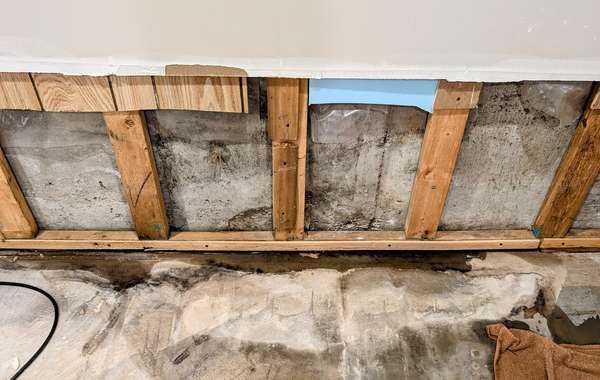
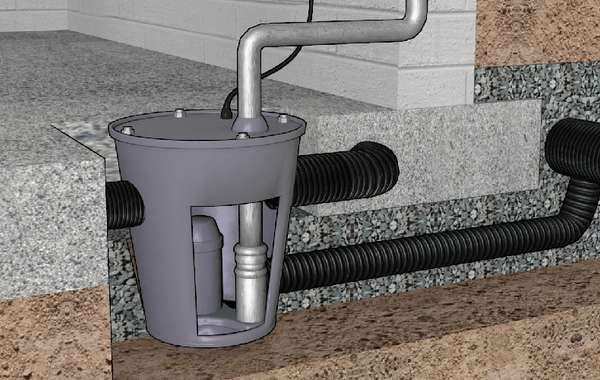

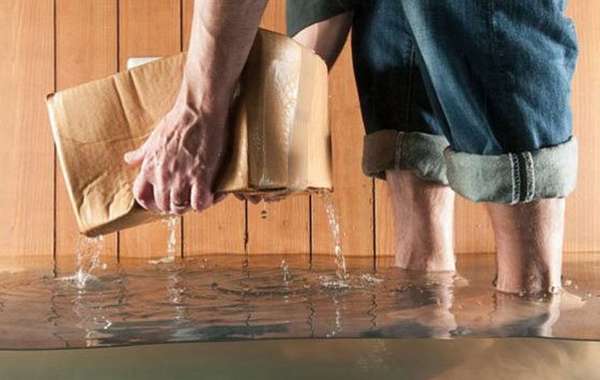
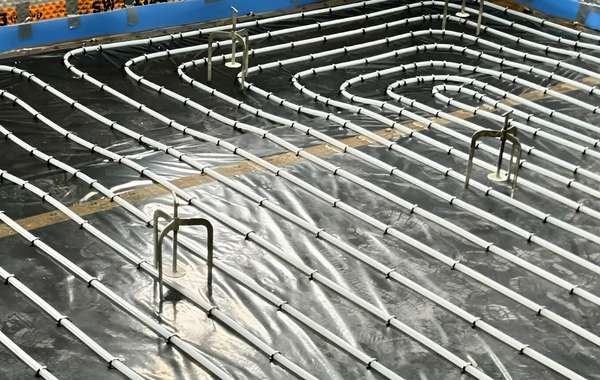

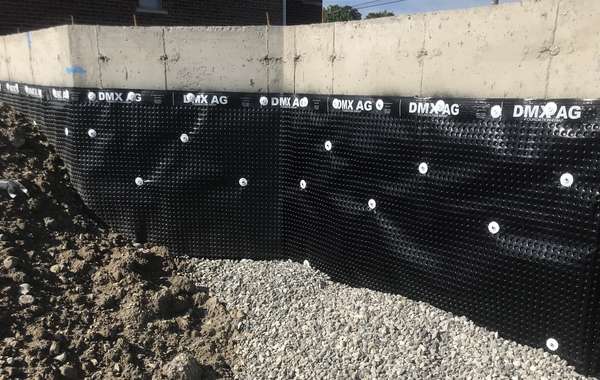
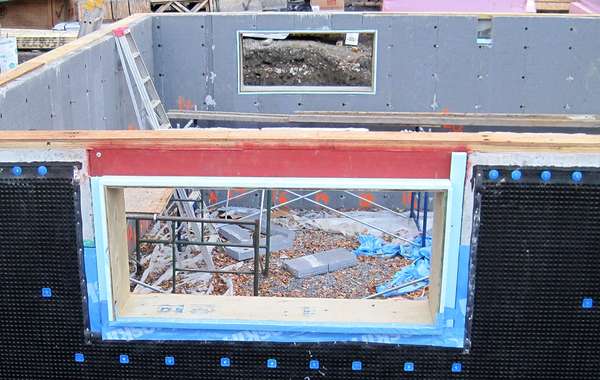
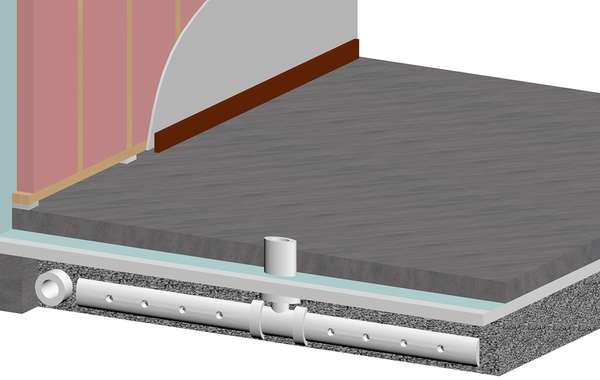

Comments (0)
Sign Up to Comment